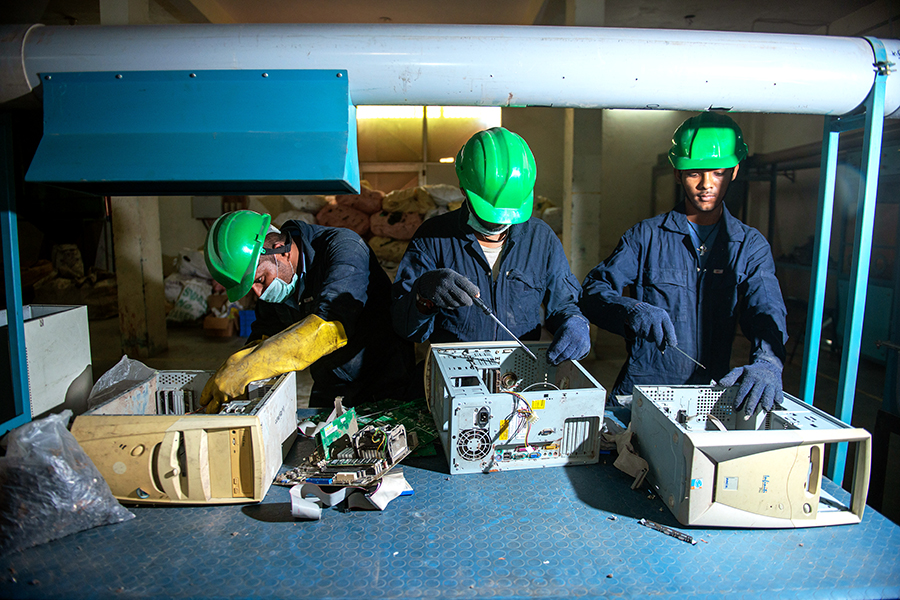Right to Repair: India’s Step in the Right Direction
Sayan Chowdhury and Prof. Nishant Kumar Verma(IIMB)
Properly implemented, the RtR policy can help achieve India’s commitment to reach carbon neutrality
by 2070 during its transition to a green economy

transition to a green economy Image: Shutterstock
The Right to Repair (RtR) movement advocates for consumers’ right to freely repair and modify their purchased products. RtR has been gaining momentum across the globe as a reaction to manufacturers making products harder to repair and designing them to become unusable quicker under the product design philosophy of “planned obsolescence”. Worried about the increased resource consumption and waste generated by the production of short-lived products engineered to fail, the US and EU governments have passed legislation around mandatory RtR policies, with India following suit by launching an RtR portal for consumers.
Properly implemented, the RtR policy can help achieve India’s commitment to reach carbon neutrality by 2070 during its transition to a green economy. While the launch of the national RtR portal is a step in the right direction, the Government of India has to deal with the pushback from manufacturers simultaneously, balance consumers’ and manufacturers’ expectations and strengthen the RtR legislation.

The journey so far
India generated around 16 lakh tonnes of e-waste in FY’22, of which less than one-third was recycled, the rest ending up in landfills. Since the informal sector handles most waste management, there is a lack of monitoring and quality control on waste management practices. This lack of quality control of waste management and large e-waste volume (third largest in the world, after China and the US) hinders India’s path towards carbon neutrality. It needs proper legislation to steer the situation in the right direction.
GoI adopted the Lifestyle for the Environment (LiFE) initiative to promote sustainable production and consumption in November 2021. Following this, a committee was set up in July 2022 by the Department of Consumer Affairs to create a comprehensive policy around the right to repair. In December 2022, the Department of Consumer Affairs launched an RtR portal to provide information to consumers about their products and facilitate the ease of accessing product repairs by acting as a centralised repository of repair-related information.
As of October 2023, when writing this article, the portal covers four sectors: farming equipment, consumer electronics (such as mobile, tablets and printers), consumer durables (white goods such as fridges, washing machines and air conditioners), and automobile equipment. Thirty-two companies operating in these four sectors have been onboarded on this portal as of October 2023. The portal provides information such as customer care numbers, publicly available warranty and post-sales service information and service network details such as the location of service centres for the onboarded companies. The portal also provides a centralised consumer grievance redressal mechanism by listing contact details from the Ministry of Consumer Affairs to local district-level commissions for consumers to seek help at different levels of government. It also provides helpful consumer information through blogs on consumer awareness. The portal’s goal is to function as a one-stop shop for customers seeking repair by acting as a single source of useful information.
Potential challenges and the way forward
GoI’s introduction of the RtR portal represents a positive step forward. This portal offers customers curated and precise information about repair and after-sales services, effectively reducing search costs and minimising the risk of fraud for less tech-savvy individuals who may struggle to distinguish between authentic and counterfeit company portals. However, the portal has not yet realised its full potential. Currently, it primarily serves as a collection of verified links and blogs for customers, offering no distinctive features that aren’t already accessible to tech-savvy users through basic online searches.
The current voluntary registration system limits the scope and depth of information available on the portal. GoI should collaborate with manufacturers to make it mandatory for them to register on the portal and provide repair-related information. This step would enhance the portal’s effectiveness and ensure a more comprehensive resource for consumers seeking repair and after-sales service information.
Drawing inspiration from global best practices, the RtR portal should consider implementing a product repairability index. This index would inform customers how easy or challenging it is to repair a particular product, enabling them to make more informed purchasing decisions and facilitating product comparisons across different companies. Additionally, as the portal functions as a comprehensive repository of repair-related information, it could host 3D models and design specifications for older parts not covered by IPR or voluntarily made available by companies rather than mandating the stocking of these parts. To enhance user convenience and reduce product misuse, creating a customer identity portal linked to Aadhar containing all product purchase details, warranty information, and other relevant data will be helpful for both customers and companies.
Globally, legislators have faced resistance from manufacturers concerning RtR legislation, with manufacturers employing various tactics, from direct lawsuits to indirect attempts to bypass the regulations outlined in the legislation. As India is trying to become a prominent global manufacturing hub and wooing foreign manufacturers to establish operations in the country, it’s crucial to strike a balance. Strengthening RtR legislation beyond a certain point may deter these manufacturers who express concerns about the potential impact on their intellectual property rights (IPR). The RtR policy must address manufacturers’ concerns while addressing legitimate consumer grievances regarding product ownership rights.
Source: Forbes India


